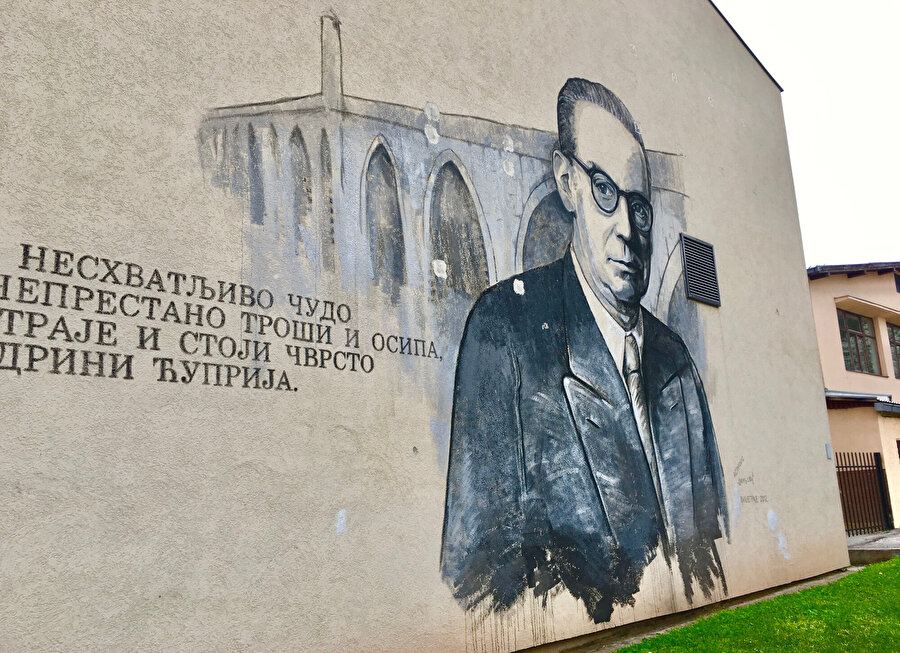We got to know Bosnia through his novels: Who is Ivo Andric?
In most of his works, Andric was interested in Bosnian history and cultural life.

(1892-1975) Yugoslav storyteller, and novelist. He is known for his historical novels describing Bosnia and its surroundings during the Ottoman period. He was born on October 10, 1892, in the Bosnian town of Dolats. He is the son of a Catholic Serbian craftsman. He spent his childhood in the town of Visegrad on the banks of the Drina river. He did his education in Sarajevo. In 1914, he was imprisoned by the Austro-Hungarian imperial authorities for his participation in the national liberation movement in Bosnia, and later exiled to Zeritsa. He was released in 1917, taking advantage of the general amnesty granted by the accession of Emperor Charles to the throne. He continued his education after World War I. He chose the subject of "Cultural Life in Bosnia and Herzegovina under the Ottoman Administration" for the doctoral exam at the University of Graz. He studied philology at the University of Zagreb and Vienna, and between the two World Wars, besides his literary studies, he served as a diplomat. World War II lived in German-occupied Belgrade. In 1961, he became the first Yugoslav writer to receive the Nobel Prize. He died on March 13, 1975, in Belgrade.
Ivo Andrić (born Ivan Andrić; 9 October 1892 – 13 March 1975) was a Yugoslav novelist, poet and short story writer who won the Nobel Prize in Literature in 1961. His writings dealt mainly with life in his native Bosnia under Ottoman rule.
Andric began his literary career with the poems he translated from the American poet Walt Whitman. Andric, who does not go beyond the Anglo-Saxon world, was interested in Bosnian history and cultural life in most of his works. His first book introducing Ivo Andric is Ex ponto (“From the Sea”), a lyrical prose essay he wrote while in exile in 1918. Later, his prison memoirs, and his stories starting in 1920, were published. The most important of Andric's works are the historical novels Na Drini Cuprija (The Bridge of the Drina), Travnichkah ronika ("Travnik Diary") and Prokleta aveija (The Evil Courtyard).
Na Drini Supriya is the author's best-known novel, the most widely read in Yugoslavia, translated into 21 languages including Arabic, Turkish and Chinese. The Drina Bridge, which was built in 1571 by the Ottoman grand vizier of Bosnian origin, Sokullu Mehmed Pasha, in the town of Visegrad, where Andric spent his childhood years, is the protagonist of the novel. By connecting the Bosnia-Herzegovina and Serbian sides of the raging Drina river, Andric reflects the events, stories, legends, and historical information clustered around this bridge, which is a symbol that connects people, in an epic narrative. Travnichkah-ronika is the story of a French consul's encounter with nature, who was sent to the Bosnian province of Travnik during the Napoleonic era. The cultural history of Bosnia under Ottoman rule is told behind the French diplomat's ongoing conflicts with the Austrian consul, Ottoman administrators, and Franciscan priests. Prokleta aveija, on the other hand, deals with the contradictions of the Franciscan priests, who settled in Bosnia during the Crusades and tried to spread Catholicism, with the Bulgarians and Ottoman Turks.
In Andric's works, there is an epic historical narrative on the one hand and a sensitivity that considers human existence as a tragic loneliness on the other. He reflected the alien and cruel conditions of the outside world in a style that tried to combine sad humanitarianism with a neutral historicity. The Nobel Prize Committee highlighted the "epic power" of Andric, especially Na Drini Cuprija.
Works of Ivo Andric
- Ex ponto, 1918;
- Na Drini Cuprija (Drina Bridge), 1945;
- Travnichkahronika (“Travnik Diary”), 1945;
- Prokleta aveija, (The Evil Court), 1955.
